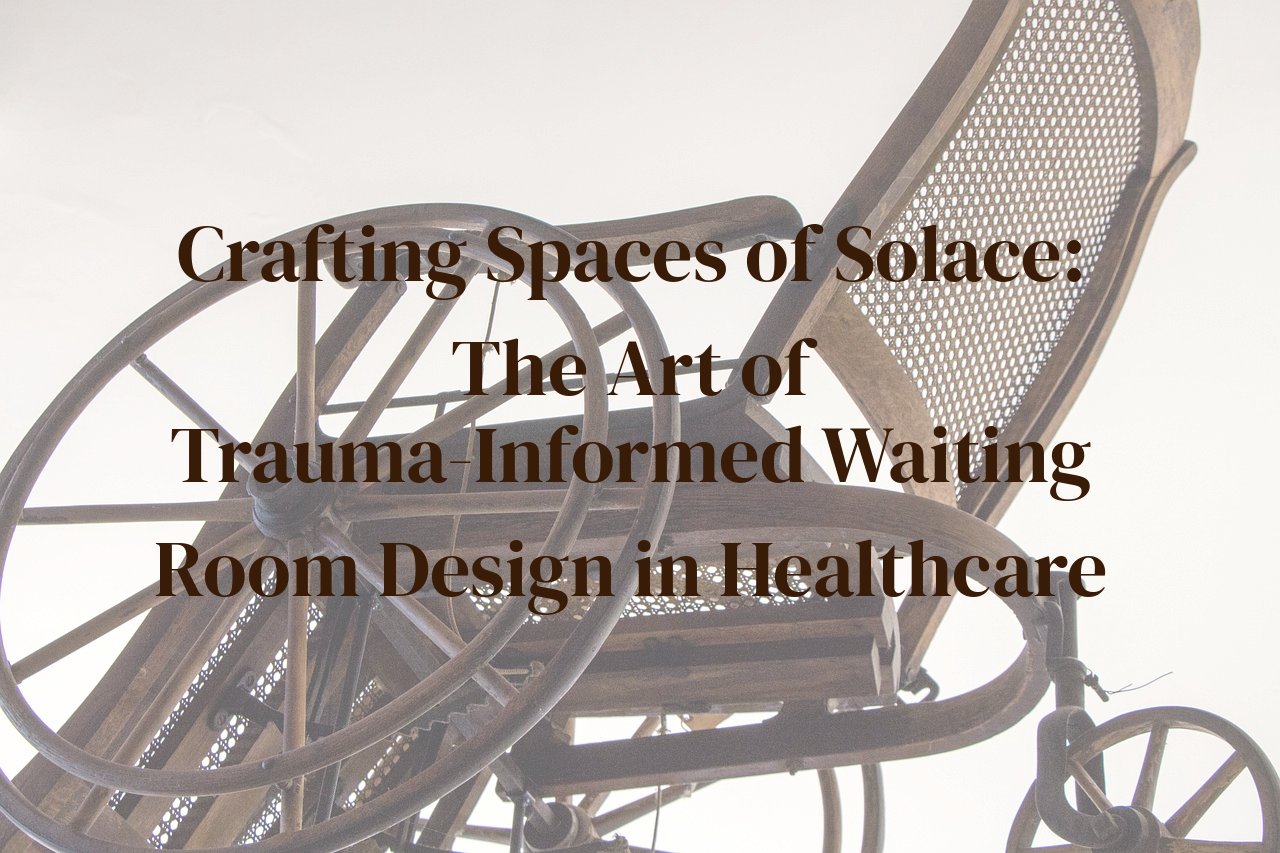
With an evolving understanding of patient-centred care, we delve into the transformative approach of crafting waiting areas that prioritize comfort and calm for individuals with trauma histories. This post will explore the intricate balance between aesthetic, function, and emotional support in the design of healthcare spaces. By unveiling strategies for creating trauma-informed environments, readers can anticipate a treasure trove of insights on enhancing the healing journey right from the moment of arrival.
Delving into this post, expect to find actionable guidelines that facilitate the design of waiting rooms attentive to the sensitivities of trauma survivors. We shed light on the profound positive impact such specialized spaces can have on patient well-being and how healthcare providers can implement these concepts to foster a supportive and nurturing atmosphere for all patients.
Table of Contents
The Essence of Trauma-Informed Architectural Design
Trauma-informed architectural design underpins the creation of spaces that recognize and respect the varied experiences patients bring into healthcare environments. As someone deeply impassioned by the intersection of therapy and design, I’ve seen first-hand how architecture can serve as a silent caregiver, subtly sheathing individuals in comfort during their most vulnerable moments. This design philosophy is a testimony to architecture’s capacity to heal and soothe without uttering a single word.
At the core of trauma-informed design is the principle of safety. From ensuring secure sight lines that allow individuals to feel in control of their space, to using unobtrusive security measures that don’t evoke feelings of confinement, the goal is to foster an aura of sanctuary. Even the architectural flow is meticulously mapped out to allow for quick and intuitive navigation, sparing patients additional stress and confusion during their visit.
Another critical element is choice. Providing options in seating arrangements, varying levels of noise, and access to quiet areas gives individuals a sense of autonomy. In my own efforts to design such spaces, I’ve prioritized patient control over their environment, implementing features like adjustable lighting and access to personal space, to empower them to shape their own experiences.
Sensory consideration is paramount in ensuring a healing environment. The strategic use of textures, from soft flooring to smooth, calming surfaces, can significantly reduce anxiety. Integrating multi-sensory elements can also cater to diverse needs, aiding not just trauma survivors but also individuals with sensory processing disorders, creating an inclusive environment where every patient feels acknowledged.
Connection is a subtle yet profound component of trauma-informed architecture. The design must encourage positive interactions yet respect the need for solitude. In my projects, I’ve employed communal spaces that facilitate collaboration and support, balanced with private nooks that offer respite from social demands. The key is crafting spaces that serve as a physical embrace, ensuring every person feels seen, respected, and, above all, safe.
Harmonizing Color and Light for a Healing Ambiance
In the realm of trauma-informed design, the interplay between color and light plays an instrumental role in sculpting a therapeutic milieu. As I weave my expertise into the very fabric of this narrative, I draw from personal observations and the tapestry of my experiences, having seen firsthand the transformative power of a thoughtfully designed space. The choice of color palette in a waiting room isn’t merely about aesthetics; it’s a deliberate strategy to elicit feelings of calmness and safety. Pastel hues, such as soft greens and blues, are infused within the room to mimic the serene essence of nature, providing a gentle embrace to those battling inner turmoil.
When it comes to lighting, the design must transcend functionality and venture into the realm of comfort. The harsh glare of fluorescent bulbs is often a telltale relic of conventional waiting rooms. Reimagining this, I advocate for the introduction of warm, dimmable LED lights that imitate a natural glow, reminiscent of a tranquil sunset or the tender morning light. The ability to adjust the luminosity empowers patients with control, a significant aspect for individuals whose traumas might be triggered by environmental factors.
Yet, the magic doesn’t stop there. Incorporating dynamic lighting elements that can adapt to circadian rhythms supports physiological wellness, optimizing melatonin production and reinforcing the body’s natural sleep-wake cycle. The strategic use of accent lighting, possibly softer on the walls and artwork, serves not only to highlight these features but also to create a layered ambience that further alleviates stress and anxiety.
Anecdotes from patients who’ve embraced the haven of a well-designed waiting room often echo with appreciation for the subtleties, like the warm embrace of light that offers solace, or the tranquil coolness of walls that seem to silently understand and support. Just as a painter carefully selects his palette to evoke emotion, so too does the health-savvy designer craft the spectrum of a waiting room, creating a symphony of hues and brightness that speaks to the soul’s need for peace and comfort in times of uncertainty.
Furniture and Layout: Prioritizing Privacy and Comfort
When envisioning trauma-informed waiting rooms, we delve deep into the intimate relationship between space and psyche. I recall my own experiences in stark, sterile waiting areas, where comfort seemed a forgotten afterthought. This underscores the critical nature of furniture choice and layout in nurturing solace. Each piece must do more than fill a room; it should speak silently to the soul, offering refuge and reassurance.
Comfortable, plush seating options radiate welcoming warmth, while arrangements favor small clusters or ‘pods’, rather than long, impersonal rows. This configuration not only diminishes the clinical air but also cultivates a sense of personal space, where one can retreat without the prying eyes of a crowded room. To me, this reflects a profound understanding that personal space is sacred, especially when one’s inner world feels tumultuous.
In my observations, privacy screens are a subtle yet potent tool. Echoing the sanctuary of nature’s alcoves, these screens can fold open for connection or close for solitude. Incorporating them gives individuals autonomy over their exposure and can serve as a balm for the invisible wounds of trauma. Seating with high backs or side panels can also create a cocoon-like feel, providing a semblance of shelter in a public setting.
Let’s not forget about the pathways between, where every corridor and walkway must consider the delicate dance of personal boundaries. Winding, unconfined paths mirror life’s meandering journey rather than rigid, linear trajectories. These thoughtful considerations are not only mindful of physical ease but echo a deeper commitment to emotional security and healing.
Traversing this path from theory to praxis, the crafting of a trauma-informed waiting room is akin to an artist’s creation of a sanctuary. The materials—the soft-cushion chairs, the privacy screens, the meandering pathways—are the palette. And comfort, privacy, the promise of a haven—these are not mere luxuries; they are necessities, as fundamental to healing as the very air we breathe within these crafted spaces of solace.
Incorporating Nature and Artwork for Psychological Well-being
As I step into the conversation about the integration of nature and artwork in trauma-informed waiting room design, I can’t help but tap into my reservoir of experiences visiting healthcare spaces. One particular memory of walking into a waiting area that felt more like a sanctuary than a medical facility stays with me. The serene sounds of a small, bubbling tabletop fountain created an auditory backdrop that counteracted the usual clinical silence. It’s remarkable how the subtle symphony of water can transport a mind grappling with anxiety to a state of peace.
Another design element that deeply resonates with me is the strategic placement of potted plants and indoor trees. They aren’t mere decorations; they represent life itself. Studies show that greenery in healthcare settings can reduce stress levels in patients. This visual connection to nature can be a gentle reminder of growth and healing in the midst of health challenges. Now picture walls graced with artwork carefully curated to evoke tranquility and inspiration. The right piece can speak without words, offering respite for the burdened heart and a visual escape for the weary soul.
But it’s not just any artwork. As a blogger passionate about the intersection of art and wellness, I’ve observed that abstract pieces of gentle hues or nature scenes can be particularly impactful. They stimulate introspection and, in a way, can facilitate a dialogue within one’s self, gently steering thoughts towards a more hopeful horizon. Thoughtful art placements also create focal points that subtly guide movement and flow within the space, crafting invisible pathways to comfort zones within the room.
Every element within these spaces carries profound potential to ease the emotional load of individuals who walk through the doors. As I’ve dialogued with healthcare professionals and design experts over the years, the consensus is clear: Incorporating elements of nature and thoughtful artwork is more than a decorative afterthought; it’s a commitment to fostering an environment that recognizes and nurtures the complex journey of healing.
In my work, I’ve also discovered the significance of dynamic lighting, where illuminating these natural and artistic elements can enhance their therapeutic effects. It’s akin to the gentle morning sun that brings out the colors of a landscape—a meticulous attention to lighting can dramatically elevate the restorative ambience of a room, transforming static objects into allies of recovery.
Strategic Implementation: From Theory to Therapeutic Practice
The transition from conceptual trauma-informed design to functional therapeutic environments is a layered process, one that I’ve observed and advocated for in my personal consulting practice. In healthcare settings, where the stakes are inherently high and emotions are often raw, the strategic implementation of trauma-informed waiting rooms requires a keen understanding of the nuances of human psychology coupled with architectural sensitivity.
Initially, a comprehensive needs assessment is vital – it gauges the unique requirements of a facility’s patient demographic. For instance, when working with a pediatric facility, we emphasized creating a separate zone for children to provide a sense of safety and playfulness away from the anxiety-inducing clinical environment. In adult spaces, we’ve found privacy nooks to be essential for individuals to process their emotions without feeling exposed.
Following the assessment, collaborative planning with architects, interior designers, and mental health experts ensures the waiting room design aligns with therapeutic goals. Regular workshops with these professionals facilitate a melding of expertise that grounds the design in both aesthetic and psychological best practices. For example, we prototype furniture arrangements to support both social interaction and private contemplation, achieving a balance tailored to patient needs.
Implementation of these designs often involves prioritizing flexibility. In one project, we introduced movable partitions, allowing the space to adapt to varying levels of occupancy and providing control over the degree of openness or enclosure. Lighting was designed to be adjustable, with warmer, dimmable options to soothe anxiety during evening hours.
Moreover, incorporating feedback mechanisms is a critical step. Post-occupancy evaluations, which include patient and staff surveys, are tools we’ve utilized to measure the real-world effectiveness of the design elements. Insights from these evaluations have led to iterative changes, such as the introduction of sound-masking systems to enhance auditory privacy that was previously overlooked.
In essence, the alchemy of crafting spaces of solace lies in the delicate dance between theory and application, where each nuanced curve of a chair, hue on a wall, or leaf of an indoor plant becomes part of a collective sanctuary that supports healing journeys. It’s an ever-evolving practice that continues to shape my work and, more importantly, the lived experiences of those in need of care.
Conclusion
In conclusion, embracing the philosophy of trauma-informed design in healthcare settings is more than a trend; it’s a necessity that reverberates with compassion and understanding. Through thoughtful design and meticulous planning, waiting rooms can transform into sanctuaries of solace that prelude the healing process. Healthcare professionals and designers, equipped with these insights, are empowered to create spaces where every person can feel seen, heard, and valued in their quest for health and recovery.



